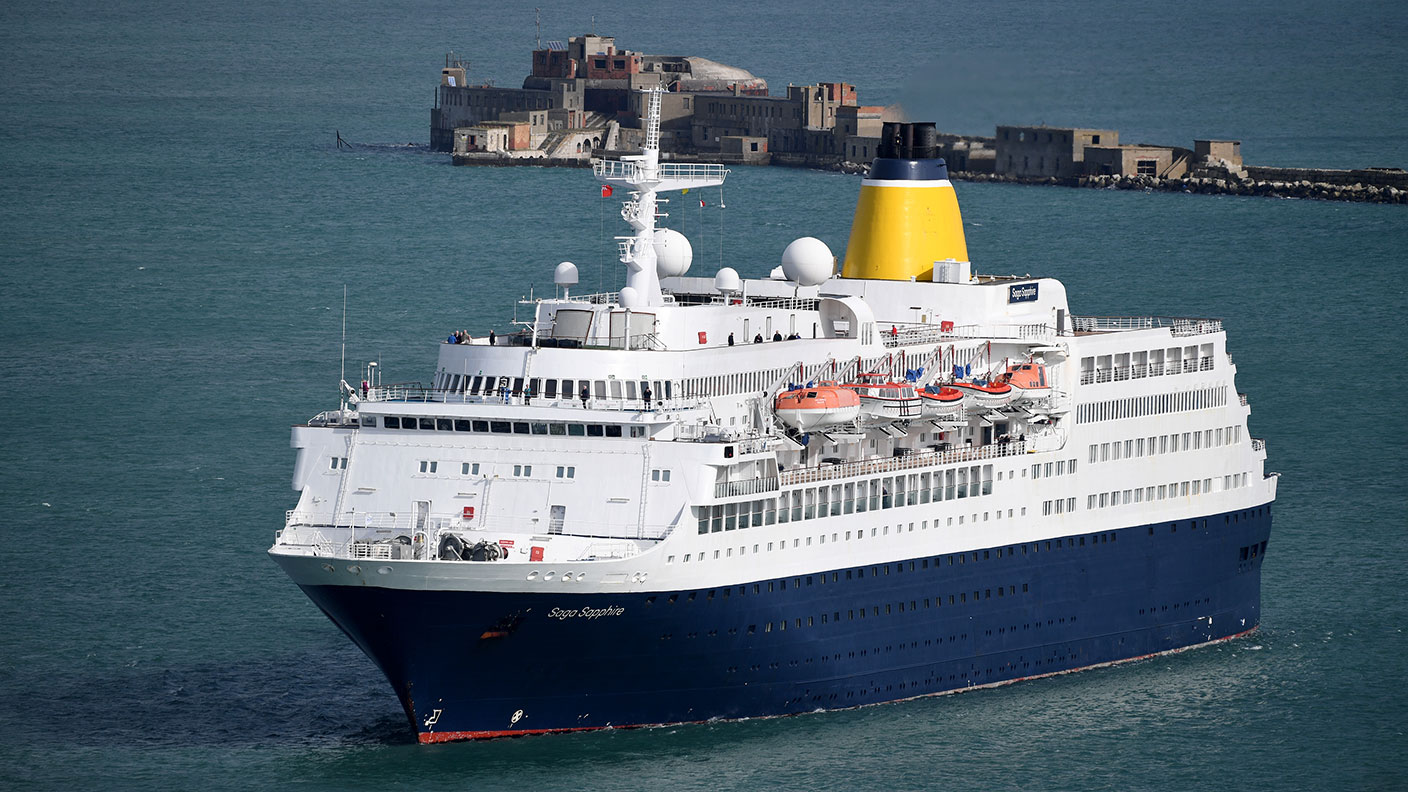Saga’s figures are heading in the right direction – so should you buy?
Saga the over-50s travel and financial services specialist, has been struggling for years. But now, with the pandemic behind, it it is planning for future growth. Rupert Hargreaves looks at where it went wrong and asks if the shares are now worth buying.


Saga (LSE: SAGA), the over-50s travel and financial services specialist, has been struggling for the best part of the past decade. Thanks to some strategic mis-steps in insurance, the company entered the pandemic in poor shape, debt was high and sales had been declining for five years.
Further, in the years before, it had spent huge sums on new cruise ships to bulk out its travel and holiday business. Just as these vessels were supposed to come online, the pandemic arrived.
In total, Saga has lost £571m over the past four years – nearly two and a half times its current market value. Still, it looks as if the business is on the way to getting back on track, although you wouldn’t know it from the share price. The stock has slumped 55% over the past 12 months. Since the end of 2019, it’s down by 78%.
MoneyWeek
Subscribe to MoneyWeek today and get your first six magazine issues absolutely FREE

Sign up to Money Morning
Don't miss the latest investment and personal finances news, market analysis, plus money-saving tips with our free twice-daily newsletter
Don't miss the latest investment and personal finances news, market analysis, plus money-saving tips with our free twice-daily newsletter
Refinitiv analyst estimates have the firm earning a profit of £35.7m this year, in line with Saga’s own trading projections. According to its latest trading update, management now expects full-year profits to come in at £35m to £50m. It also looks as if the group has put its balance sheet issues behind it.
After raising around £400m last year through a share placing and bond issue, Saga is now expecting leverage to start falling in the second half of the year with the ambition of repaying a £150m bond when it falls due in 2024. In January, the group had a cash buffer of £187m to support its operations.
Saga’s market share should help the company prosper
Ever since Saga went public in 2014, I have been fascinated by the business.
In theory, it should be raking in cash. The Saga brand is well trusted by its main market, the over-50s, and the size of that market is growing steadily. According to the latest UK census figures, the number of over-65s in the UK and Wales has reached record levels.
And unlike other market segments, the wealth of the over-50s is booming. One in four pensioners in Britain is now a millionaire thanks to soaring property and pension values, according to government data.
These are the sort of market advantages many companies can only dream of. So, where did Saga go wrong?
Most of the group’s problems stem from its insurance business. The UK home and car insurance markets are well developed and highly competitive. Yes, Saga has an edge over some of the market, but it is working against big, strong competitors. Insurance can also be a tricky business if companies don’t get their sums right, and this is where Saga has tripped up in the past.
Still, management has been working hard to get the insurance arm back onto a stable footing and these efforts are paying off. Policy margins have stabilised, new products are performing well and recurring revenue is growing (which is good news, as this has a far lower cost for customer acquisitions).
Thanks to all of these initiatives, management is projecting a long-term combined ratio for the group of 97% (a ratio below 100% indicates an underwriting profit). Any insurance company that can sustainably earn a combined ratio of less than 100% on a repeat basis is doing something right.
For example, according to consultancy EY, the overall UK car insurance market could see a combined ratio of as much as 113.8% this year and 111.1% in 2023 due to higher costs and stagnant premiums.
Cruising back into profit
As the insurance business gets back on its feet, the holiday and cruise business is also showing signs of strength. While there’s still some disruption across these two divisions, Saga is projecting an ocean cruise load factor of 67% for the first half of 2022.
It is also now forecasting a load factor of 83% for the second half and 75% for the full-year. With a daily rate of £319 from paying customers, compared to just under £300 last year, the business is clearly making headway.
The holidays business (comprising Titan Travel and Saga Holidays) is also improving in line with the rest of the global travel industry, although management still expects a loss for the year.
Nonetheless, the latest trading update clearly shows that Saga is putting the pandemic behind it and planning for future growth.
The company could face growing pains in the future
That said, despite its improving outlook, I’d be wary of rushing headlong into this stock.
Saga has plenty of attractive qualities, but as I’ve pointed out above, its main profit centre today is insurance, and this is a tough industry. The organisation is going to have its work cut out to keep on top of the sector and achieve further growth.
Indeed, management is already expecting the profit margin on each insurance policy to fall in the next financial year, costing £20m to £21m in annual profits. The travel business will have to pick up the slack here.
Based on its own projections and Refinitiv analyst earnings estimates for the current fiscal year, the Saga share price is selling at a forward price/earnings (p/e) ratio of 6.5 falling to 3.8 next year. That looks cheap on the face of it, but there’s a huge amount of uncertainty here. I think it’s unlikely the market will re-rate the stock to a higher multiple until the group is firmly back in the black.
SEE ALSO:
Carnival faces a long road to recovery – avoid for now
Get the latest financial news, insights and expert analysis from our award-winning MoneyWeek team, to help you understand what really matters when it comes to your finances.

Rupert is the former deputy digital editor of MoneyWeek. He's an active investor and has always been fascinated by the world of business and investing. His style has been heavily influenced by US investors Warren Buffett and Philip Carret. He is always looking for high-quality growth opportunities trading at a reasonable price, preferring cash generative businesses with strong balance sheets over blue-sky growth stocks.
Rupert has written for many UK and international publications including the Motley Fool, Gurufocus and ValueWalk, aimed at a range of readers; from the first timers to experienced high-net-worth individuals. Rupert has also founded and managed several businesses, including the New York-based hedge fund newsletter, Hidden Value Stocks. He has written over 20 ebooks and appeared as an expert commentator on the BBC World Service.
-
 RICS: Budget failed to boost property market and recovery unlikely until spring 2026
RICS: Budget failed to boost property market and recovery unlikely until spring 2026Data from the Royal Institution of Chartered Surveyors suggests the Autumn Budget hasn't helped to improve property market sentiment
-
 FCA launching targeted support to help savers with complex financial decisions
FCA launching targeted support to help savers with complex financial decisionsThe regulator wants to help you get to grips with investing and pension planning. Here’s how its new targeted support framework will help you
-
 Halifax: House price slump continues as prices slide for the sixth consecutive month
Halifax: House price slump continues as prices slide for the sixth consecutive monthUK house prices fell again in September as buyers returned, but the slowdown was not as fast as anticipated, latest Halifax data shows. Where are house prices falling the most?
-
 Rents hit a record high - but is the opportunity for buy-to-let investors still strong?
Rents hit a record high - but is the opportunity for buy-to-let investors still strong?UK rent prices have hit a record high with the average hitting over £1,200 a month says Rightmove. Are there still opportunities in buy-to-let?
-
 Pension savers turn to gold investments
Pension savers turn to gold investmentsInvestors are racing to buy gold to protect their pensions from a stock market correction and high inflation, experts say
-
 Where to find the best returns from student accommodation
Where to find the best returns from student accommodationStudent accommodation can be a lucrative investment if you know where to look.
-
 The world’s best bargain stocks
The world’s best bargain stocksSearching for bargain stocks with Alec Cutler of the Orbis Global Balanced Fund, who tells Andrew Van Sickle which sectors are being overlooked.
-
 Revealed: the cheapest cities to own a home in Britain
Revealed: the cheapest cities to own a home in BritainNew research reveals the cheapest cities to own a home, taking account of mortgage payments, utility bills and council tax
-
 UK recession: How to protect your portfolio
UK recession: How to protect your portfolioAs the UK recession is confirmed, we look at ways to protect your wealth.
-
 Buy-to-let returns fall 59% amid higher mortgage rates
Buy-to-let returns fall 59% amid higher mortgage ratesBuy-to-let returns are slumping as the cost of borrowing spirals.